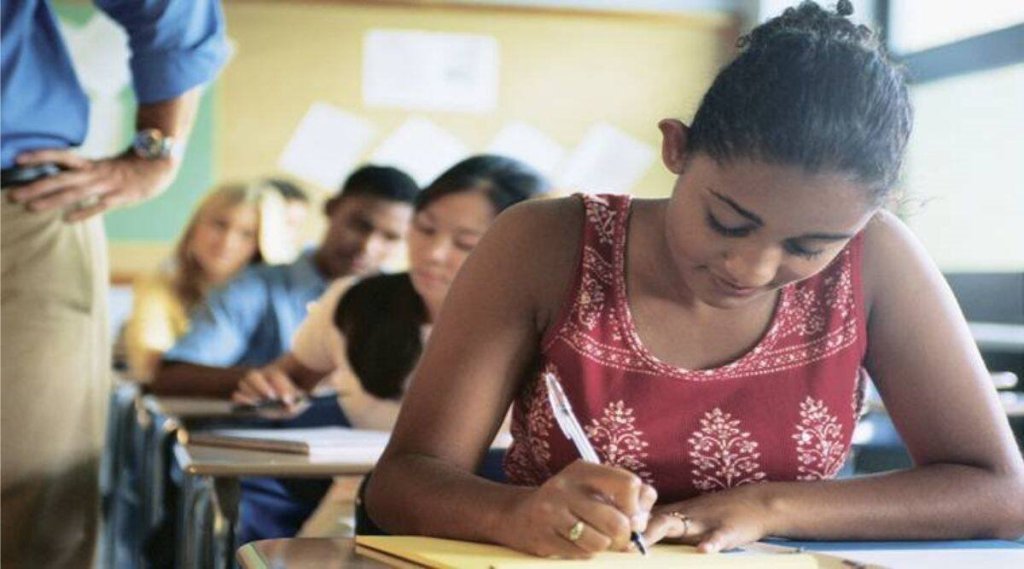Schools in India are usually the same throughout the country. Students generally wake up early in the morning when they are rushed to the school that too when they feel half-sleepy, ending up learning half of what is being taught and also aimlessly trying to complete the homework. This model of education is now slowly changing now, with the introduction of the Finnish model of education in India.
In India, a standard education model is followed where the government appoints agencies and experts to draw up a curriculum, followed by teachers teaching the students from the set of books. Students then try to learn it by heart, for which they are assessed via long-hour exams.
According to the experts, students are taught using the practical methods in the Finnish model of education where the students are encouraged to use their common sense for solving problems. The Finnish education system focuses on the holistic growth and learning of the student, for instance, students are made to count trees or moving cars for learning calculations and counting. Students are given stones and sticks that are used in teaching them the pattern of shapes and much more. The education model also gives them a chance to learn about soil by making them visit the fields and also measurements by making lemonades.
According to Chani Trivedi, Director of Nordic High International School, Indore, the Finnish education system believes in practical learning wherein, kids are given lots of opportunities for exploring their likes and interests. While comparing the Finnish education system and the Indian education system, the main difference between the two is the capacity to explore. Although the Indian education system is exciting, what needs to be understood is the fact that every child is unique and every child’s requirement is different.
The Finland education model does not have any formal examination. Students under this education model are assessed in more than one way, which ensures real learning happens, instead of running behind grades. Apart from this, teacher training plays a key in any education system, as experts believe that it is the educator that holds the power to scrape the theoretical approach and assist children to learn in an engaging way.
Finnish education model in India
India is slowly gaining traction with the Finnish model of education, wherein experts have started introducing the education model right from the elementary classes, wherein some have adopted this model till Class 4, while others have taken it up till Class 8.
According to Jyoti Arora, the principal of Delhi World Public School, Noida Extension, the Finnish model of education offers experiential learning followed by the concept of phenomenal-based learning that enables children to learn by practically doing things. This multidisciplinary learning model focuses on being their voice and helps in developing their sense of responsibility in dealing with real world issues and problems.
However, the Finnish education system has not been adopted solely by any school in India. According to experts, it won’t be possible to shift completely to this education model in India. As per Ashish Srivastava, the CEO of the Finnish model of education, Children will have to appear for board exams and also compete in entrance exams. India’s NEP 2020 announcement noted a significant step towards shifting focus on getting students ready for the future and the Finnish model of education would play a crucial role in it. The Indian education system revolved around central exams up till now in which the student is required to only focus on tests instead of relevant learning which also affects the mental well-being of the student, along with a lack of alternative choices and more.
In major schools that follow the Finnish model of education, academics usually doesn’t happen till 9 am. Instead, they are given a transition phase of 15 minutes that allows students to adjust to their surroundings.
According to Sindhu Krishna, the principal and director of The Little Titans, a New Nordic School, students start their day with classroom activities related to the learning areas in terms of language, literacy, numeracy, environment, community and development. The school inculcates activities like Mindfulness and Cooking during the week, and only two or three areas of learning are inculcated during the day.
Some believe that the Finnish model of education fails to introduce introductory and basic concepts. Although these schools do not follow the pen-and-paper teaching approach of teaching, they never skip any important topics of the basics.
Student assessment
The Finnish model of education does not have tests or exams, as educators believe that this helps students avoid exam stress and anxiety about being graded for a three-hour exam. Here students are motivated to learn basic concepts using a practical approach, without being judged or assessed for their learnings.
In this model, students are not forced to participate in rote-learning culture and are given their own space to grasp the concept, which helps in bringing the students to school every day, without having to hate the learning space.
Teachers training
Teachers play an important part in students learning process. The Finnish model of education extensively devotes its resources to train its teachers for the system, where in teachers are given special training before the term starts and are trained on various aspects of the Finnish education model, where in they could also customise as per their class requirements.

